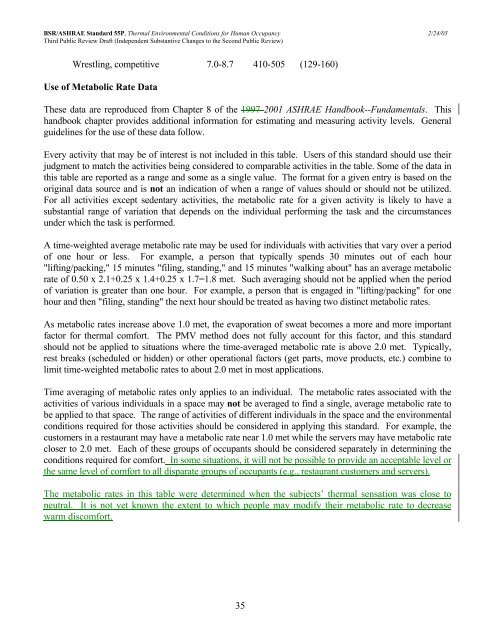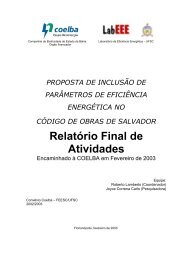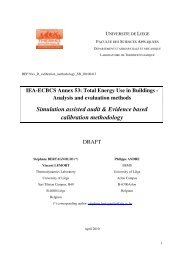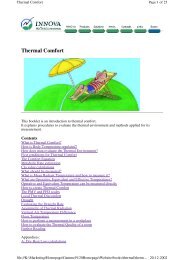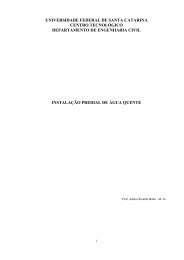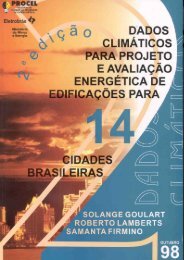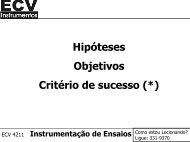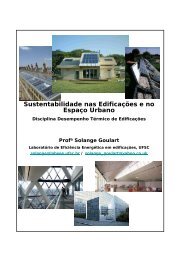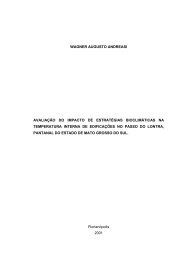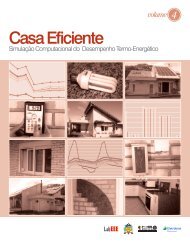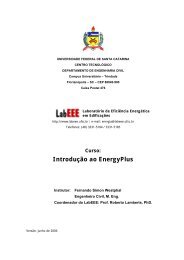ASHRAE STANDARD - 55R
ASHRAE STANDARD - 55R
ASHRAE STANDARD - 55R
Create successful ePaper yourself
Turn your PDF publications into a flip-book with our unique Google optimized e-Paper software.
BSR/<strong>ASHRAE</strong> Standard 55P, Thermal Environmental Conditions for Human Occupancy 2/24/03<br />
Third Public Review Draft (Independent Substantive Changes to the Second Public Review)<br />
Wrestling, competitive 7.0-8.7 410-505 (129-160)<br />
Use of Metabolic Rate Data<br />
These data are reproduced from Chapter 8 of the 1997 2001 <strong>ASHRAE</strong> Handbook--Fundamentals. This<br />
handbook chapter provides additional information for estimating and measuring activity levels. General<br />
guidelines for the use of these data follow.<br />
Every activity that may be of interest is not included in this table. Users of this standard should use their<br />
judgment to match the activities being considered to comparable activities in the table. Some of the data in<br />
this table are reported as a range and some as a single value. The format for a given entry is based on the<br />
original data source and is not an indication of when a range of values should or should not be utilized.<br />
For all activities except sedentary activities, the metabolic rate for a given activity is likely to have a<br />
substantial range of variation that depends on the individual performing the task and the circumstances<br />
under which the task is performed.<br />
A time-weighted average metabolic rate may be used for individuals with activities that vary over a period<br />
of one hour or less. For example, a person that typically spends 30 minutes out of each hour<br />
"lifting/packing," 15 minutes "filing, standing," and 15 minutes "walking about" has an average metabolic<br />
rate of 0.50 x 2.1+0.25 x 1.4+0.25 x 1.7=1.8 met. Such averaging should not be applied when the period<br />
of variation is greater than one hour. For example, a person that is engaged in "lifting/packing" for one<br />
hour and then "filing, standing" the next hour should be treated as having two distinct metabolic rates.<br />
As metabolic rates increase above 1.0 met, the evaporation of sweat becomes a more and more important<br />
factor for thermal comfort. The PMV method does not fully account for this factor, and this standard<br />
should not be applied to situations where the time-averaged metabolic rate is above 2.0 met. Typically,<br />
rest breaks (scheduled or hidden) or other operational factors (get parts, move products, etc.) combine to<br />
limit time-weighted metabolic rates to about 2.0 met in most applications.<br />
Time averaging of metabolic rates only applies to an individual. The metabolic rates associated with the<br />
activities of various individuals in a space may not be averaged to find a single, average metabolic rate to<br />
be applied to that space. The range of activities of different individuals in the space and the environmental<br />
conditions required for those activities should be considered in applying this standard. For example, the<br />
customers in a restaurant may have a metabolic rate near 1.0 met while the servers may have metabolic rate<br />
closer to 2.0 met. Each of these groups of occupants should be considered separately in determining the<br />
conditions required for comfort. In some situations, it will not be possible to provide an acceptable level or<br />
the same level of comfort to all disparate groups of occupants (e.g., restaurant customers and servers).<br />
The metabolic rates in this table were determined when the subjects’ thermal sensation was close to<br />
neutral. It is not yet known the extent to which people may modify their metabolic rate to decrease<br />
warm discomfort.<br />
35


